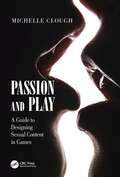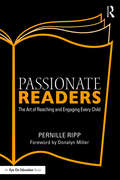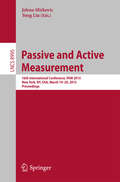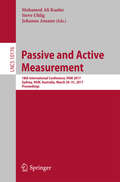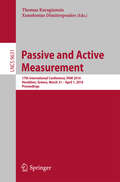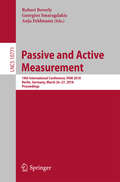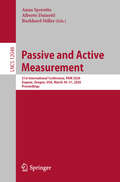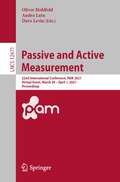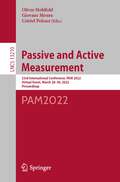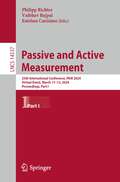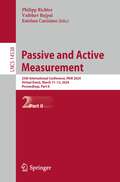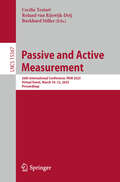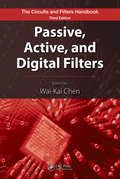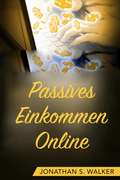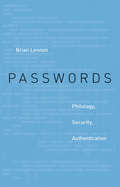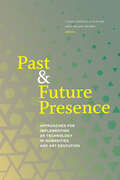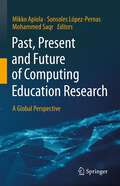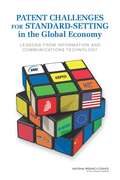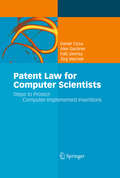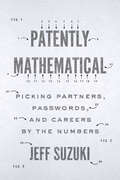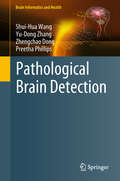- Table View
- List View
Passenger List: The tie-in novel to the award-winning, cult-hit podcast
by John Dryden'A first class, edge-of-your-seat thriller. Fast-paced, flawlessly executed and hugely entertaining, it'll leave you breathless.' Sara LotzA missing plane.A cabin full of suspects.One woman's quest for the truth.When Atlantic Airlines Flight 702 disappears mid-flight between London and New York, the world is stunned. With the public clamouring for answers, authorities seem at a loss as to how to explain the plane's disappearance. There were 256 passengers on Flight 702, with many carrying dark secrets on board with them. Could one of them hold the truth behind the plane's disappearance? College student Kaitlin Le's beloved twin brother Conor was on that plane. She refuses to believe the official statements, or to join her parents in their blind acceptance of Conor's death. But as she journeys deeper into the murky heart of what really happened on board that plane, it becomes clear she's drawing attention to herself. And there are some people who would rather the truth behind the fate of Flight 702 stayed buried...
Passion and Play: A Guide to Designing Sexual Content in Games
by Michelle CloughHoping to add some steam and sex to your next game? Then this book is for you. This practical guide provides you with the foundational tools needed to write, design, and create healthy sexual content in video games in ways that are narratively compelling, varied, and hot! Challenging the assumptions that sex in games is superfluous, exploitative, or only of interest to straight guys, this book encourages designers to create meaningful, enjoyable sexual content for all audiences. Using examples from well-known AAA games (and some standout indie content!), each chapter provides a framework to guide game writers, designers, and developers through the steps of creating and executing sexual content in their games – from early concept, to setting it up in larger game narrative, and finally to executing specific sexual scenes and sequences. It also lays out a host of details and considerations that, while easily missed or forgotten, can have a major impact on the quality or theme of the scene. Offering expert insight and ideas for creating sex scenes in games, this book is vital reading for game designers, writers, and narrative designers who are interested in making games with sexual content. It will also appeal to artists, cutscene directors, audio engineers, composers, and programmers working on these games – or really, any game developer with an interest in the topic!
Passionate Readers: The Art of Reaching and Engaging Every Child
by Pernille RippHow do we inspire students to love reading and discovery? In Passionate Readers: The Art of Reaching and Engaging Every Child, classroom teacher, author, and speaker Pernille Ripp reveals the five keys to creating a passionate reading environment. You’ll learn how to… Use your own reading identity to create powerful reading experiences for all students Empower your students and their reading experience by focusing on your physical classroom environment Create and maintain an enticing, well-organized, easy-to-use classroom library; Build a learning community filled with choice and student ownership; and Guide students to further develop their own reading identity to cement them as life-long, invested readers. Throughout the book, Pernille opens up about her own trials and errors as a teacher and what she’s learned along the way. She also shares a wide variety of practical tools that you can use in your own classroom, including a reader profile sheet, conferring sheet, classroom library letter to parents, and much more. These tools are available in the book and as eResources to help you build your own classroom of passionate readers.
Passive and Active Measurement
by Yong Liu Jelena MirkovicThis book constitutes the refereed proceedings of the 16th International Conference on Passive and Active Measurement, PAM 2015, held in New York, NY, USA, in March 2015. The 27 full papers presented were carefully reviewed and selected from 100 submissions. The papers have been organized in the following topical sections: DNS and Routing, Mobile and Cellular, IPv6, Internet-Wide, Web and Peer-to-Peer, Wireless and Embedded, and Software Defined Networking.
Passive and Active Measurement
by Mohamed Ali Kaafar Steve Uhlig Johanna AmannThis book constitutes the refereed proceedings of the 10th International Conference on Passive and Active Measurement, PAM 2009, held in Seoul, Korea, in April 2009. The 22 revised full papers and 2 revised demo papers presented were carefully reviewed and selected from 77 submissions. The papers focus on research and practical applications of routing and forwarding, topology and delay, methods for large-scale measurements, wireless, management tools, audio and video traffic, peer-to-peer, traffic measurements, and measurements of anomalous and unwanted traffic.
Passive and Active Measurement
by Thomas Karagiannis Xenofontas DimitropoulosThis bookconstitutes the proceedings of the 17th International Conference on Passive andActive Measurement, PAM 2016, held in Heraklion, Crete, Greece, in March/April2016. The 30 full papers presented in this volume werecarefully reviewed and selected from 93 submissions. They are organized intopical sections named: security and privacy; mobile and cellular; the lastmile; testbeds and frameworks; web; DNS and routing; IXPs and MPLS; andscheduling and timing.
Passive and Active Measurement: 18th International Conference, PAM 2017, Sydney, NSW, Australia, March 30-31, 2017, Proceedings (Lecture Notes in Computer Science #10176)
by Mohamed Ali Kaafar, Steve Uhlig and Johanna AmannThis book constitutes the proceedings of the 18th International Conference on Passive and Active Measurement, PAM 2017, held in Sydney, Australia, in March 2017.The 20 full papers presented in this volume were carefully reviewed and selected from 87 submissions. They are organized in topical sections on IPv6, Web and applications, security, performance, latency, characterization and troubleshooting, and wireless.
Passive and Active Measurement: 19th International Conference, Pam 2018, Berlin, Germany, March 26-27, 2018, Proceedings (Lecture Notes in Computer Science #10771)
by Robert Beverly Georgios Smaragdakis Anja FeldmannThis book constitutes the proceedings of the 19th International Conference on Passive and Active Measurement, PAM 2018, held in Berlin, Germany, in March 2018.The 20 full papers presented in this volume were carefully reviewed and selected from 50 submissions. The papers demonstrate the import and extent to which measurements pervade systems – from protocols to performance to security. They are organized in the following topical sections: models and inference; security and privacy; CDNs; DNS; certificates; interdomain routing; and analyzing protocols.
Passive and Active Measurement: 20th International Conference, PAM 2019, Puerto Varas, Chile, March 27–29, 2019, Proceedings (Lecture Notes in Computer Science #11419)
by David Choffnes Marinho BarcellosThis book constitutes the proceedings of the 20th International Conference on Passive and Active Measurement, PAM 2019, held in Puerto Varas, Chile, in March 2019. The 20 full papers presented were carefully reviewed and selected from 75 submissions. The papers cover a wide range of important networking measurement and analysis topics from low layers of the network stack up to applications, using measurements at scales large and small, and covering important aspects of the network ecosystem such as routing, DNS, privacy, security, and performance. They are organized in the following topical sections: mobile networks; measurement at Internet scale; measuremen at other scales; domain names; failures; security and privacy; and Web.
Passive and Active Measurement: 21st International Conference, PAM 2020, Eugene, Oregon, USA, March 30–31, 2020, Proceedings (Lecture Notes in Computer Science #12048)
by Burkhard Stiller Alberto Dainotti Anna SperottoThis book constitutes the proceedings of the 21st International Conference on Passive and Active Measurement, PAM 2020, held in Eugene, Oregon, USA, in March 2020. The 19 full papers presented in this volume were carefully reviewed and selected from 65 submissions. They were organized in topical sections named: active measurement; security; best practices and conformance; domain names; topology and routing; topology - alias resolution; and Web.
Passive and Active Measurement: 22nd International Conference, PAM 2021, Virtual Event, March 29 – April 1, 2021, Proceedings (Lecture Notes in Computer Science #12671)
by Dave Levin Oliver Hohlfeld Andra LutuThis book constitutes the proceedings of the 22nd Conference on Passive and Active Measurement, PAM 2021, which was planned to be held in Cottbus, Germany, in March 2021. Due to the Corona pandemic, the conference was organized as a virtual meeting. The 33 full papers presented in this volume were carefully reviewed and selected from 75 submissions. They were organized in topical sections named: COVID-19; web security; video streaming; TLS; staying connected; DoS; performance; network security; DNS; capacity; and exposing hidden behaviors. Due to the Corona pandemic, PAM 2021 was held as a virtual conference.
Passive and Active Measurement: 23rd International Conference, PAM 2022, Virtual Event, March 28–30, 2022, Proceedings (Lecture Notes in Computer Science #13210)
by Oliver Hohlfeld Giovane Moura Cristel PelsserThis book constitutes the proceedings of the 23rd International Conference on Passive and Active Measurement, PAM 2022, held in March 2022. Due to COVID-19 pandemic, the conference was held virtually. The 15 full papers and 15 short papers presented in this volume were carefully reviewed and selected from 62 submissions. The papers present emerging and early-stage research in network measurements – work that seeks to better understand complex, real-world networked systems and offer critical empirical foundations and support to network research.
Passive and Active Measurement: 24th International Conference, PAM 2023, Virtual Event, March 21–23, 2023, Proceedings (Lecture Notes in Computer Science #13882)
by Anna Brunstrom Marcel Flores Marco FioreThis book constitutes the proceedings of the 24th International Conference, PAM 2023, held as a virtual event, March 21–23, 2023.The 18 full papers and 9 short papers presented in this volume were carefully reviewed and selected from 80 submissions. The papers are organized in the following topical sections: VPNs and Infrastructure; TLS; Applications; Measurement Tools; Network Performance; Topology; Security and Privacy; DNS; and Web.
Passive and Active Measurement: 25th International Conference, PAM 2024, Virtual Event, March 11–13, 2024, Proceedings, Part I (Lecture Notes in Computer Science #14537)
by Philipp Richter Vaibhav Bajpai Esteban CarisimoThis book constitutes the proceedings of the 25th International Conference on Passive and Active Measurement, PAM 2024, held as a virtual event from March 11–13, 2024.The 14 full papers and 13 short papers presented in this volume were carefully reviewed and selected from 64 submissions. The papers are organized in the following topical sections: Applications, IPv6, Machine Learning, and Measurement Tools.
Passive and Active Measurement: 25th International Conference, PAM 2024, Virtual Event, March 11–13, 2024, Proceedings, Part II (Lecture Notes in Computer Science #14538)
by Philipp Richter Vaibhav Bajpai Esteban CarisimoThis book constitutes the proceedings of the 25th International Conference on Passive and Active Measurement, PAM 2024, held as a virtual event from March 11–13, 2024.The 14 full papers and 13 short papers presented in this volume were carefully reviewed and selected from 64 submissions. The papers are organized in the following topical sections: Network Security, Routing, Satellite Networks, Topology, Transport Protocol and User Privacy.
Passive and Active Measurement: 26th International Conference, PAM 2025, Virtual Event, March 10–12, 2025, Proceedings (Lecture Notes in Computer Science #15567)
by Burkhard Stiller Cecilia Testart Roland van Rijswijk-DeijThis book constitutes the proceedings of the 26th International Conference on Passive and Active Measurement, PAM 2025, held as a virtual event, during March 10–12, 2025. The 13 full papers and 7 short papers presented in this book were carefully reviewed and selected from 67 submissions. These papers cover a diverse range of topics, from 5G to IPv6, and from Web to Fraud. These papers have been categorized under the following topical sections: IPv6; Measurement Platforms; Web / HTTP; Connectivity; Routing; Anycast; Phishing and Fraud; 5G.
Passive, Active, and Digital Filters (The Circuits and Filters Handbook, 3rd Edition)
by Wai-Kai ChenUpon its initial publication, The Circuits and Filters Handbook broke new ground. It quickly became the resource for comprehensive coverage of issues and practical information that can be put to immediate use. Not content to rest on his laurels, in addition to updating the second edition, editor Wai-Kai Chen divided it into tightly-focused texts that made the information easily accessible and digestible. These texts have been revised, updated, and expanded so that they continue to provide solid coverage of standard practices and enlightened perspectives on new and emerging techniques.Passive, Active, and Digital Filters provides an introduction to the characteristics of analog filters and a review of the design process and the tasks that need to be undertaken to translate a set of filter specifications into a working prototype. Highlights include discussions of the passive cascade synthesis and the synthesis of LCM and RC one-port networks; a summary of two-port synthesis by ladder development; a comparison of the cascade approach, the multiple-loop feedback topology, and ladder simulations; an examination of four types of finite wordlength effects; and coverage of methods for designing two-dimensional finite-extent impulse response (FIR) discrete-time filters. The book includes coverage of the basic building blocks involved in low- and high-order filters, limitations and practical design considerations, and a brief discussion of low-voltage circuit design.Revised Chapters: Sensitivity and Selectivity Switched-Capacitor Filters FIR Filters IIR Filters VLSI Implementation of Digital Filters Two-Dimensional FIR Filters Additional Chapters: 1-D Multirate Filter Banks Directional Filter Banks Nonlinear Filtering Using Statistical Signal Models Nonlinear Filtering for Image Denoising Video Demosaicking Filters This volume will undoubtedly take its place as the engineer's first choice in looking for solutions to problems encountered when designing filters.
Passives Einkommen Online
by Jonathan S. WalkerLernen Sie die Geheimnisse, wie Sie noch heute online ein passives Einkommen generieren und Geld verdienen, dass für Sie arbeitet! Haben Sie es satt, sich wie ein Hund abzuarbeiten und ständig im Hamsterrad zu laufen? Haben Sie genug davon, täglich Zeit zu opfern, um Geld zu verdienen, auf Kosten Ihrer Freunde und Familie, wodurch Sie nie Ihre Zeit mit Ihren Geliebten verbringen zu können? Was, wenn ich Ihnen sage, dass es eine Möglichkeit gibt, online ein passives Einkommens-Imperium zu erschaffen, ohne Ihre Arbeit kündigen zu müssen? Würden Sie zuschlagen? Online Passives Einkommen ist die Lösung all Ihrer Probleme. Um derjenige zu sein, auf den ALLE eifersüchtig sind, müssen Sie HEUTE mit dem Aufbau Ihres Passiven Einkommens beginnen. Es braucht Zeit, bis ein neues Geschäft wächst und dieses Buch zeigt Ihnen die genauen Schritte, die Sie zum Starten Ihrer Reise tätigen müssen. In diesem Buch lernen Sie: 5 Profitable Quellen, um passive Einkommensströme online zu erzeugen Spezifische Strategien, damit Ihr Unternehmen wächst Profitable und hohes Einkommen generierende Blogs zu erstellen Ein Geschäftsimperium zu erbauen und mit FBA zu verkaufen Eine Mitgliedschaftsseite zu erstellen Mit E-Books auf dem Amazon Kindle Store Geld zu verdienen Einen profitablen Youtube Kanal einzurichten Die Resultate von online passiven Einkommen: Die Möglichkeit, die Welt zu bereisen Ihre Träume erfüllen Finanzielle Sicherheit haben Finanziell stressfrei sein Jederzeit kaufen, was immer Sie wollen Sie erhalten eine detaillierte Schritt für Schritt Anleitung für all die einzigartigen Strategien. Wagen Sie den Sprung ins Wasser mit all diesem Wissen in Ihrer Hand und werden Sie zu jemanden, der finanziell Frei ist und jeden Tag passives Einkommen kassiert? Jemand, der vor 40 in Rente geht und die Freiheit hat, sein
Passwords: Philology, Security, Authentication
by Brian LennonCryptology, the mathematical and technical science of ciphers and codes, and philology, the humanistic study of natural or human languages, are typically understood as separate domains of activity. But Brian Lennon contends that these two domains, both concerned with authentication of text, should be viewed as contiguous. He argues that computing’s humanistic applications are as historically important as its mathematical and technical ones. What is more, these humanistic uses, no less than cryptological ones, are marked and constrained by the priorities of security and military institutions devoted to fighting wars and decoding intelligence. Lennon’s history encompasses the first documented techniques for the statistical analysis of text, early experiments in mechanized literary analysis, electromechanical and electronic code-breaking and machine translation, early literary data processing, the computational philology of late twentieth-century humanities computing, and early twenty-first-century digital humanities. Throughout, Passwords makes clear the continuity between cryptology and philology, showing how the same practices flourish in literary study and in conditions of war. Lennon emphasizes the convergence of cryptology and philology in the modern digital password. Like philologists, hackers use computational methods to break open the secrets coded in text. One of their preferred tools is the dictionary, that preeminent product of the philologist’s scholarly labor, which supplies the raw material for computational processing of natural language. Thus does the historic overlap of cryptology and philology persist in an artifact of computing—passwords—that many of us use every day.
Past and Future Presence: Approaches for Implementing XR Technology in Humanities and Art Education
by Brian Beams Lissa Crofton-SleighWhile uses and studies of XR technology within STEM-based education have been plentiful in recent years, there has been lesser or even, at times, a lack of coverage for this novel learning tool in the arts and humanities.Past and Future Presence aims to bridge some of that gap by presenting research-based theory and case studies of successful application and implementation of XR technology into postsecondary educational settings, ranging in topics from ancient to modern languages, classical and contemporary art, and reenvisioned historical scenes and events presented in ways never seen before. The studies also contemplate how this novel medium can enhance and supplement learning in classrooms and other formal or informal learning environments. The volume as a whole is intended to demonstrate to educators, scholars, and researchers in higher education the potential value of integrating XR technology into their classrooms and to provide a strong argument for college and university administrators to invest in training and development of new research and content for classrooms inside and outside of STEM. The authors of these chapters come from a diverse range of backgrounds at different stages of their careers, providing a broad crosssection of scholastic work within the humanities and arts. Each chapter offers a different angle or approach to incorporating XR technology into teaching or research within different subject areas. As the volume suggests, this technology also places additional emphasis on the humanity within the humanities, by focusing on increasing connection between users and different cultures, time periods, and perspectives.
Past, Present and Future of Computing Education Research: A Global Perspective
by Mikko Apiola Sonsoles López-Pernas Mohammed SaqrThis book presents a collection of meta-studies, reviews, and scientometric analyses that together reveal a fresh picture about the past, present, and future of computing education research (CER) as a field of science. The book begins with three chapters that discuss and summarise meta-research about the foundations of CER, its disciplinary identity, and use of research methodologies and theories. Based on this, the book proceeds with several scientometric analyses, which explore authors and their collaboration networks, dissemination practices, international collaboration, and shifts in research focus over the years. Analyses of dissemination are deepened in two chapters that focus on some of the most influential publication venues of CER. The book also contains a series of country-, or region-level analyses, including chapters that focus on the evolution of CER in the Baltic Region, Finland, Australasia, Israel, and in the UK & Ireland. Two chapters present case studies of influential CER initiatives in Sweden and Namibia. This book also includes chapters that focus on CER conducted at school level, and cover crucially important issues such as technology ethics, algorithmic bias, and their implications for CER.In all, this book contributes to building an understanding of the past, present and future of CER. This book also contributes new practical guidelines, highlights topical areas of research, shows who to connect with, where to publish, and gives ideas of innovative research niches. The book takes a unique methodological approach by presenting a combination of meta-studies, scientometric analyses of publication metadata, and large-scale studies about the evolution of CER in different geographical regions. This book is intended for educational practitioners, researchers, students, and anyone interested in CER. This book was written in collaboration with some of the leading experts of the field.
Patent Challenges for Standard-Setting in the Global Economy
by Keith MaskusPatent Challenges for Standard-Setting in the Global Economy: Lessons from Information and Communication Technology examines how leading national and multinational standard-setting organizations (SSOs) address patent disclosures, licensing terms, transfers of patent ownership, and other issues that arise in connection with developing technical standards for consumer and other microelectronic products, associated software and components, and communications networks including the Internet. Attempting to balance the interests of patent holders, other participants in standard-setting, standards implementers, and consumers, the report calls on SSOs to develop more explicit policies to avoid patent holdup and royalty-stacking, ensure that licensing commitments carry over to new owners of the patents incorporated in standards, and limit injunctions for infringement of patents with those licensing commitments. The report recommends government measures to increase the transparency of patent ownership and use of standards information to improve patent quality and to reduce conflicts of laws across countries.
Patent Law for Computer Scientists
by Jörg Machek Daniel Closa Alex Gardiner Falk GiemsaPatent laws are different in many countries, and inventors are sometimes at a loss to understand which basic requirements should be satisfied if an invention is to be granted a patent. This is particularly true for inventions implemented on a computer. While roughly a third of all applications (and granted patents) relate, in one way or another, to a computer, applications where the innovation mainly resides in software or in a business method are treated differently by the major patent offices in the US (USPTO), Japan (JPO), and Europe (EPO). The authors start with a thorough introduction into patent laws and practices, as well as in related intellectual property rights, which also explains the procedures at the USPTO, JPO and EPO and, in particular, the peculiarities in the treatment of applications centering on software or computers. Based on this theoretical description, next they present in a very structured way a huge set of case studies from different areas like business methods, databases, graphical user interfaces, digital rights management, and many more. Each set starts with a rather short description and claim of the "invention", then explains the arguments a legal examiner will probably have, and eventually refines the description step by step, until all the reservations are resolved. All of these case studies are based on real-world examples, and will thus give an inexperienced developer an idea about the required level of detail and description he will have to provide. Together, Closa, Gardiner, Giemsa and Machek have more than 70 years experience in the patent business. With their academic background in physics, electronic engineering, and computer science, they know about both the legal and the subject-based subtleties of computer-based inventions. With this book, they provide a guide to a patent examiner's way of thinking in a clear and systematic manner, helping to prepare the first steps towards a successful patent application.
Patently Mathematical: Picking Partners, Passwords, and Careers by the Numbers
by Jeff SuzukiUncovers the surprising ways math shapes our lives—from whom we date to what we learn.How do dating sites match compatible partners? What do cell phones and sea coasts have in common? And why do computer scientists keep ant colonies? Jeff Suzuki answers these questions and more in Patently Mathematical, which explores the mathematics behind some of the key inventions that have changed our world.In recent years, patents based on mathematics have been issued by the thousands—from search engines and image recognition technology to educational software and LEGO designs. Suzuki delves into the details of cutting-edge devices, programs, and products to show how even the simplest mathematical principles can be turned into patentable ideas worth billions of dollars. Readers will discover • whether secure credit cards are really secure• how improved data compression made streaming video services like Netflix a hit• the mathematics behind self-correcting golf balls• why Google is such an effective and popular search engine• how eHarmony and Match.com find the perfect partner for those seeking a mate• and much more!A gifted writer who combines quirky historical anecdotes with relatable, everyday examples, Suzuki makes math interesting for everyone who likes to ponder the world of numerical relationships. Praise for Jeff Suzuki's Constitutional Calculus"Presents an entertaining and insightful approach to the mathematics that underlies the American system of government. The book is neatly organized, breaking down the United States Constitution by article, section, and amendment. Within each piece, Suzuki reviews the mathematical principles that went into the underlying framework."—Mathematical Reviews"A breath of fresh air.... A reaffirmation that mathematics should be used more often to make general public policy."—MAA Reviews
Pathological Brain Detection (Brain Informatics and Health)
by Shui-Hua Wang Yu-Dong Zhang Zhengchao Dong Preetha PhillipsThis book provides detailed practical guidelines on how to develop an efficient pathological brain detection system, reflecting the latest advances in the computer-aided diagnosis of structural magnetic resonance brain images. Matlab codes are provided for most of the functions described. In addition, the book equips readers to easily develop the pathological brain detection system further on their own and apply the technologies to other research fields, such as Alzheimer’s detection, multiple sclerosis detection, etc.

